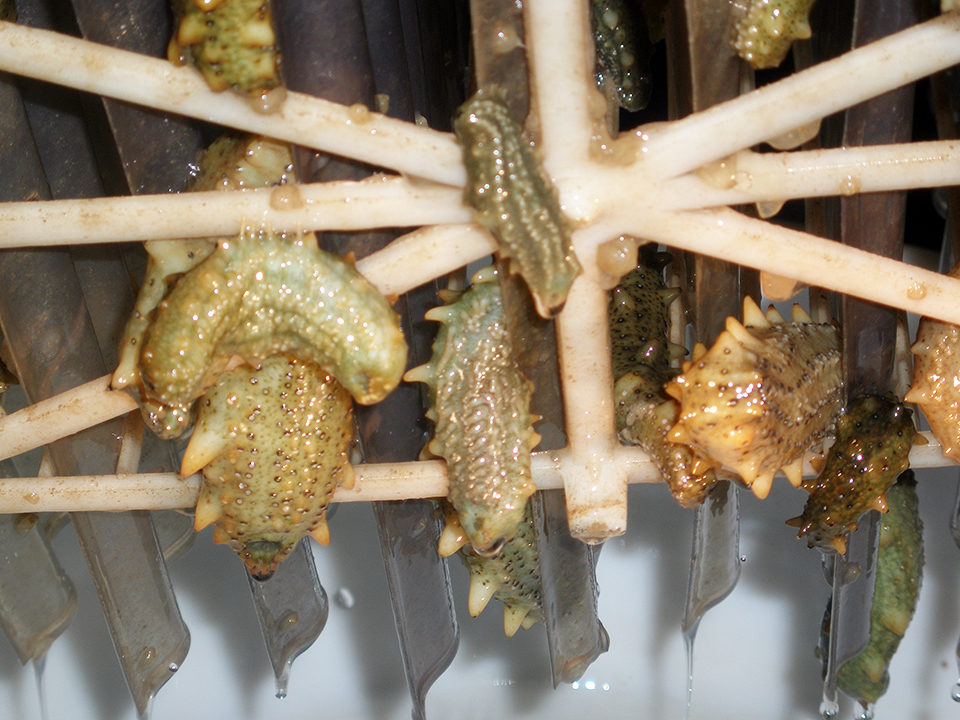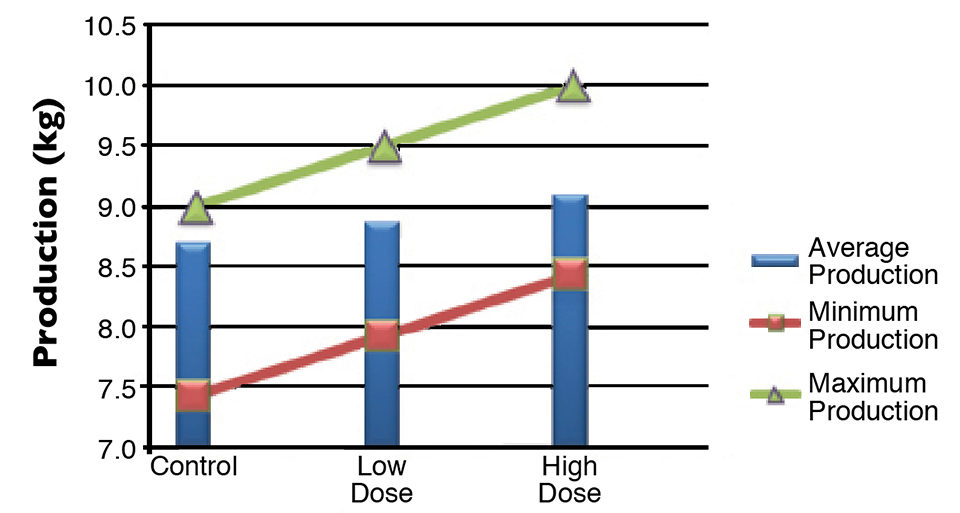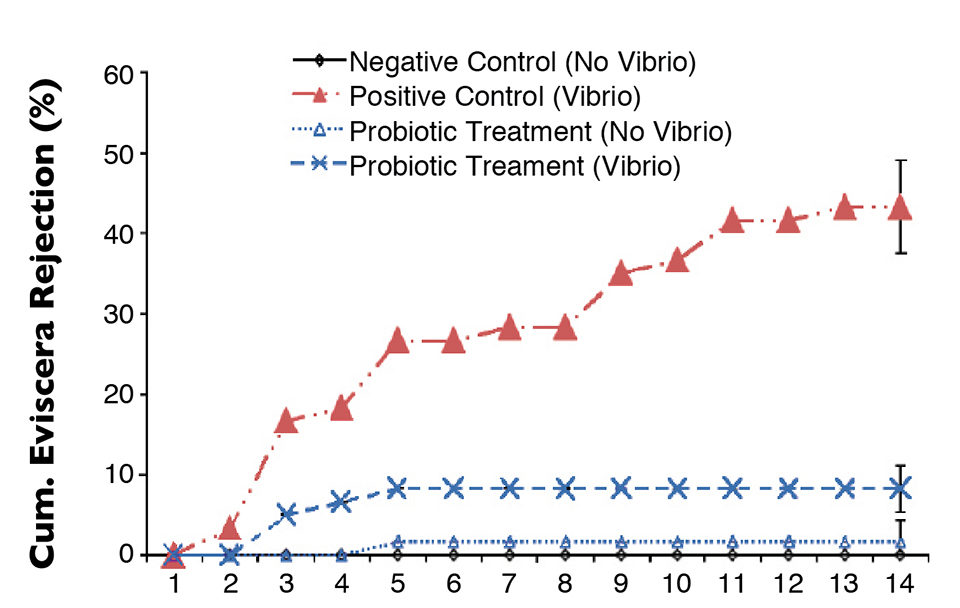Malfunction of digestive ducts coincides with difficult molting stages

The history of the sea cucumber fishery dates back for more than 1,000 years. Over the last century, and especially the past 20 years, Chinese research projects have focused on the breeding and artificial culture of the species.
There are 134 species of sea cucumber identified in China seas, among which about 20 species have commercial value. As of 2005, Apostichopus japonicas was the only species cultured in China.
While sea cucumbers are one of the most prized seafoods in China and Asia, and aquaculture programs are being developed on a huge commercial scale, sea cucumber production still suffers from low and suboptimal juvenile production. The selection and use of proper feeds and the overall management practices in the nursery have been identified as the issues in the production process.
Apparently one of the main problems during the nursery phase comes from malfunction of the digestive ducts, especially gastritis, in the animals, which coincides with two difficult molting stages: the initial auricularia stage and 7- to 10-day-old juveniles. Subsequently, the young seed spends several months in the nursery tanks to reach lengths of 2 to 3 cm before they can be transferred to ponds for farming or to open sea. According to researcher Jiaxin Chen, the key to increased survival in the hatchery and nursery is to provide an appropriate feed and improve the overall management in the tanks.
Probiotics
Microbial products are seen as, among other things, alternatives to the prophylactic use of chemicals. However, the presence of poor-quality probiotics in the market and the misunderstandings regarding their functions have given rise to doubts about their efficacy.
As discussed in numerous scientific reviews, selected microbial strains can perform a range of functions. These range from the control of pathogens, both in animals’ digestive systems and the environment, by direct inhibition and competition for nutrients, to the stimulation of the animals’ immune systems, enhanced feed utilization and the improvement of water quality.
Hatchery/nursery study
In a study, the authors tested the efficacy of a commercial mixture of selected Bacillus strains in the larviculture and/or grow-out of Apostichopus japonicas. Eighty-day-old juvenile sea cucumbers were stocked at 7.5 kg juveniles/18-m³ tank.
A commercial probiotic mixture was applied during the nursery phase. The protocol is given in Table 1.
Zhang, Probiotic Applications, Table 1
| Day(s) | Low-Dose Probiotics (g/tank) | High-Dose Probiotics (g/tank) |
|---|
Day(s) | Low-Dose Probiotics (g/tank) | High-Dose Probiotics (g/tank) |
|---|---|---|
| 0 | 0 | 0 |
| 1 | 20 | 20 |
| 2-7 | 5 | 5 |
| 8-10 | 20 | 20 |
| 11-23 | 10 | 10 |
| 24-89 | 10 | 50 |
| 90-107 | 10 | 10 |
Ten, tanks containing prefiltered seawater were used as a control treatment. Five tanks each were used for the two treatments with probiotics, a low-dose protocol and a high-dose protocol. The tanks were aerated with air stones, and dissolved-oxygen concentrations were measured daily. Culture Phase 1 Juveniles of 0.13 to 0.17 g individual weight were distributed on the settlement substrates at a density of 2,500-3,300 individuals/m3. The sea cucumbers were fed in the morning and late afternoon with an artificial feed mixed with sea mud, at a rate of 5 to 8 percent of body weight daily.
Every day, 50 percent of the water was renewed. The tanks were cleaned every seven to 10 days by transferring the substrates and animals to new tanks. It took 55 days to finish the first phase of the cycle.
During this first phase, the yield of the tanks treated with the probiotics was better than that for the control treatment (Figure 1). The average harvested biomass volumes per tank were 9.1, 8.9 and 8.7 kg, respectively, for the high-dose protocol, low-dose protocol and control treatment. An increased yield of 4.5 percent was noticed after 55 days of culture in the high-dose probiotic protocol. Moreover, 5 to 10 percent less feed was administered in the tanks with the probiotics compared to the control tanks.

Phase 2, nursery
After phase 1, the juveniles were removed from the settlement substrates. After weighing and sorting, the animals were distributed to new settlement substrates and tanks.
During the second phase, days 56 to 140, the probiotics were still administered on a daily basis in the two protocols. As a result, higher biomass yields were obtained. The average biomass harvested per tank after 140 days were 18.4, 20.4 and 22.1 kg for the control, low-dose and high-dose treatments. The average increase in yield was 18 percent after 140 days of culture in the high-dose probiotic protocol (Figure 2).

Challenge with vibrio splendidus
At the end of phase 2, the A. japonicas juveniles were graded and redistributed in new tanks reflecting their earlier treatments. Subsequently, the different treatments were restarted, and after two extra weeks of culture, A. japonicas juveniles from each treatment were transferred to the lab for a challenge test with Vibrio splendidus bacteria.
A negative control consisted of sea cucumbers that were not challenged with the Vibrio. A positive control group was exposed to V. splendidus during the culture period. Both treatments were done on animals selected from tanks treated with or without probiotics.

It was clear that the addition of the probiotics significantly increased the robustness of the juvenile sea cucumbers. A significant reduction of the eviscera ejection rate was noticed in animals treated with probiotics versus animals treated without probiotics (Figure 3). The use of probiotics might improve the culture performance of sea cucumbers, as it has an immediate effect against Vibrio splendidus, a well-known pathogen of A. japonicas.
(Editor’s Note: This article was originally published in the July/August 2015 print edition of the Global Aquaculture Advocate.)
Authors
-
-
Geert Rombaut, Ph.D.
Inve Aquaculture
Dendermonde, Belgium -
Patrick Lavens, Ph.D.
Inve Aquaculture
Dendermonde, Belgium
Tagged With
Related Posts

Responsibility
Sea cucumber project redefining traditional farming in Madagascar
Farming sea cucumbers – known as sea slugs in China – is changing people’s lives, giving rural workers in Madagascar a potential pathway out of poverty.

Intelligence
An engineer’s design for a classroom aquaculture-aquaponics system
An aquaponics teaching system was designed, built and operated by students at the University of Arizona, integrating its operation and management into the educational curriculum. This engineering design will require minimum maintenance and will last years.

Health & Welfare
Probiotics benefit Pacific white shrimp challenged with AHPND
A study was conducted to measure the effects of commercial probiotics on Pacific white shrimp in a standardized AHPND challenge model under controlled laboratory conditions. Results show that the probiotics treatments by themselves have beneficial effects, such as higher survival and histological signs of hepatopancreas regeneration.

Health & Welfare
Probiotics benefit three stages of juvenile rohu
Experiments were conducted to evaluate the potential survival and growth benefits of three multi-strain probiotics in three different stages of juvenile rohu (hatchling to advanced fry). Results showed beneficial effects of the probiotics treatments for the hatchling and fry stages, but not for later stages.


